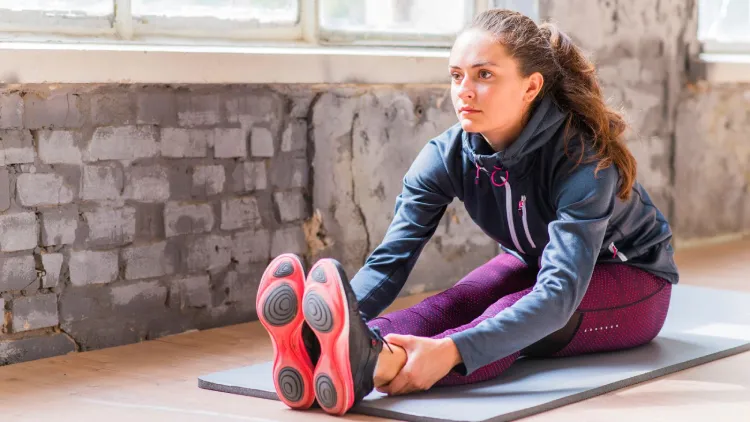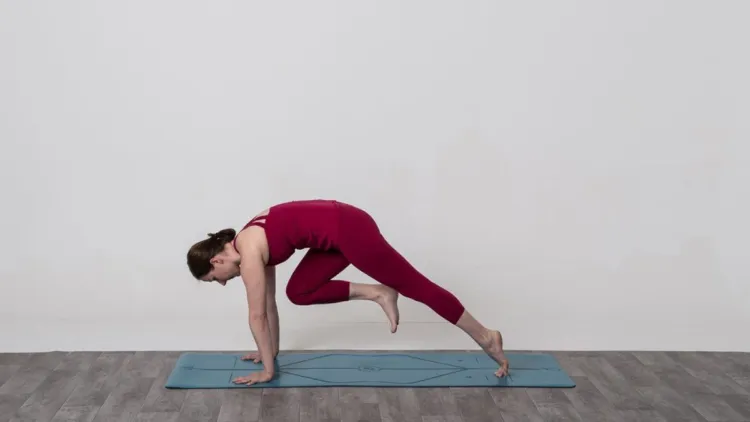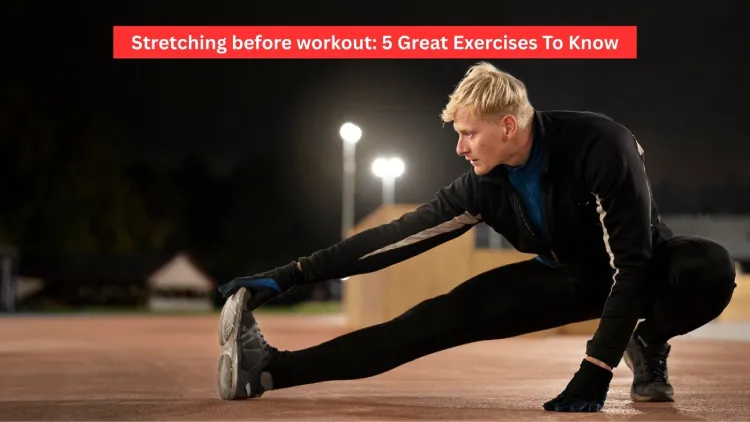It may seem tempting to cut out your stretches when time is short, but spending a moment to slowly increase your heart rate will save you from injury.
Stretching before workout, for example, with these dynamic exercises, is more effective than a slow stretch after you finish. With the recommendation of the National Strength and Conditioning Association, dynamic stretching is advised before you begin any physical activity since it exercises your muscles over a bigger range of motion and gets your body warmed up faster than static stretching.
Self has reported before that stretching in place before your workout may weaken your performance. All athletes, regardless of whether they run or lift weights, should always warm up. Practising like this hardens your body and allows you to understand your current fitness and mindset. Adjusting to any symptoms of pain can help ensure you are healthy for your next workout. If your shoulder is sore from not sleeping well, do some light stretches on it before you work out or change to a workout that doesn’t stress your shoulders as much.
When you use our pre-workout stretches, you’ll increase your flexibility gently before your workout. In these exercises, your whole body is involved as you stretch your spine, torso, hips, hamstrings, hip flexors, back and shoulders. She advises that the warm-up should not be hard: If you find that your heart is beating fast or you’re out of breath or sweating, slow down.
With that in mind, perform these full-body stretches slowly and change them whenever you want; the most important thing is to feel light and comfortable before your big workout. We’ve made a few small changes that you can use to adjust them.
Do you want to start right away? To prepare quickly for your workout, use this quick 5-10 minute warm-up guide.
Read More: The Ultimate Guide on 5 Oblique Stretches and Exercises

The Workout
All you need is a good yoga mat to feel comfortable while practising. If you aren’t yet ready for the basic poses, you could use yoga props or blocks.
Exercises on Stretching Before Workout
- Child’s pose
- Cat-cow
- Donkey kick
- Dog-bird crunch
- Downward Dog and Runner’s Lunge
Instructions
Get through your set of reps, then go straight to the next set, forming a circuit with them. Circuit repeats take no longer than a few minutes. Just take it easy and be careful. Should you have more time, go through the exercises twice or three times in a row.
Read More: How To Stretch Forearm Muscles in the Best Possible Way?
Child’s Pose
- If you’re down on your knees, place them a hip width apart and put your feet behind you.
- Exhale and relax your spine, lean your body against the thighs and put your arms forward.
- Try lifting your ribs from your tailbone while simultaneously sending the top of your head towards the sky.
- Put your forehead down on the top of the yoga mat.
- There is no ‘ should’ from us regarding technique, breathe i, as long as you can hold comfortably and then breathe out three times.
For you, this pose relaxes your back and shoulders. When doing the stretch, make sure to keep yourself moving in and out of the stretch. If you are unable to roll your hips to your heels, that’s okay, you can use a pillow (or a bunch of blankets) in its place. If you’re hurting in your knees in this asana, you can work them hard to support yourself further.
Cat-Cow
- Set up with your shoulders a little higher than your wrists and your hips right above your knees. Take a slow breath in and then, as you breathe out, bend your back, lower your head and move your navel upward. Cat pose is what this posture is named.
- Pull your head, chest and tailbone upward together, while arcing your back upward on the following inhale. This is cow pose.
- Slowly complete this exercise three times.
The small movements and transitions in cat-cow poses help you feel the different parts of your spine while warming up the muscles around your back and shoulders. When your wrists hurt, you can support yourself on your elbows or wear wrist wraps in your wrists. If you find it hard to breathe while you exercise, slow down and match the speed to your breathing.
Donkey kick
- Start on your hands and knees, with your knees directly under your hips and your shoulders directly above your wrists and keep your body tight the entire time.
- Don’t lock your knee or bend your right leg; keep your right foot extended as you kick the air. Stop where you are when you finish your first set. Should you feel this in your lower back, watch out for your spine and try not to hunch forward.
- Bend your right knee down to the floor for each repetition.
- Do five controlled and slow reps holding onto something on just one leg. Now do it to the other cheek as well.
You can use donkey kicks to get your hips, shoulders and chest ready for your workout. Let your control replace any excess of momentum you might know from other games. If you notice your hips moving or coming off the wall to one side, bring your tipping hip closer to the wall to fix the issue.

Hound Crunch
- To begin, on all fours, kneeling on the floor, hands under the shoulders, knees under the hips.
- Straighten your back, get your hips on the floor at the same level and put your left arm out and your right leg back. Picture yourself inching your foot in the direction of the wall which is behind you.
- Grab your left elbow with your right knee resting on top of your belly button and hug up your abs.
- Lift your leg and again raise the opposite arm and take a step back. In the second position, don’t get too squatty, just stay in a light flex of the right foot as if you were doing the exercise. It’s just one rep for you.
As an additional, end position hold three reps on each side (five seconds) if you want, perform controlled stretch with upper arm and lower leg extensions.
Any workout you are doing needs to be consistency-focused, and this simple exercise will help you with core strength while you are building that core. If it’s hard for you to keep your equilibrium, hold the toes of your working leg and move that furthest leg front and back to make certain to correctly straighten it.
Downward Dog and Runner’s Lunge
- Stand with your hands where your shoulders are and your knees where your hips are — get into a four-point stance.
- Lie down with your feet on the floor and put your palms and index fingers on the floor.
- Now, press up to the ceiling, lift your tailbone, arch your back and move your hips back and up towards the ceiling from there. Finally, slightly push the ball of your feet up into the ground. With your arms wrapped around your torso, put your head inside them, straighten your back and glance at your knees.
- To get into a plank position, step your right foot out to the outside of your right hand, briefly hold your pose and move your weight ahead. Raise your torso and come into a low lunge. Grind your spine through your backside muscles to make your back leg’s hip go high. Just did one repetition.
- Do three controlled exercises, then, with control, transfer to the other side.
Moving in this way from one exercise to the next can open your hips and back better, which helps you focus on your movement more closely. If you feel tight in your lower body, bring both knees to the mat in Downward Dog. With your feet not fully supported, that’s also acceptable. If it’s hard to put your foot forward, take a knee, push with that leg backwards and stand up by bringing your foot forward.

Benefits of Doing Stretching Before Workout
- Warming up the muscles by moving blood faster helps you get ready for physical activity.
- Increases your body’s flexibility and movement by softening your muscles and joints.
- It better prepares your muscles for the strains of exercise, reducing your chance of injury.
- Helps you work out better by improving your control over your body and muscles.
- It gets your mind into the right place so you’re ready to do your best.
Conclusion
Adding dynamic stretches to your routine before starting any activity is an easy way to get both your body and mind ready. Working out gradually, getting more flexible and using important muscles help you prevent injury and be ready for better results. If you spend just a few minutes stretching each day, your workouts will feel better, helping you maintain progress, strength and safety in the long run.
Frequently Asked Questions
1. Why does it pay to use dynamic stretching instead of static stretching before you work out?
Dynamic stretching works by moving to warm up your muscles, and static stretching is for when you’re winding down after a workout.
2. How many minutes should you spend on stretching before you exercise?
It should last between 5 and 10 minutes, including movements that target your whole body.
3. Is it okay to miss my stretching routine if I can’t exercise for long?
Even just a five-minute warm-up can help lower your chance of injury and boost how well you play.
4. For these stretches, what things will I need?
The only thing you need is a yoga mat, and if needed, you can add yoga blocks or pillows to give you extra support.







